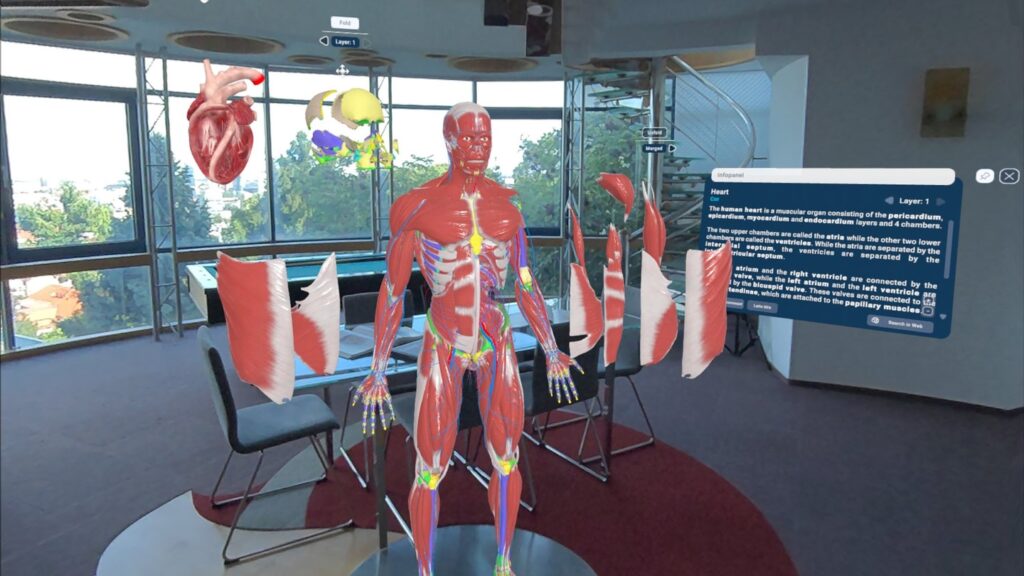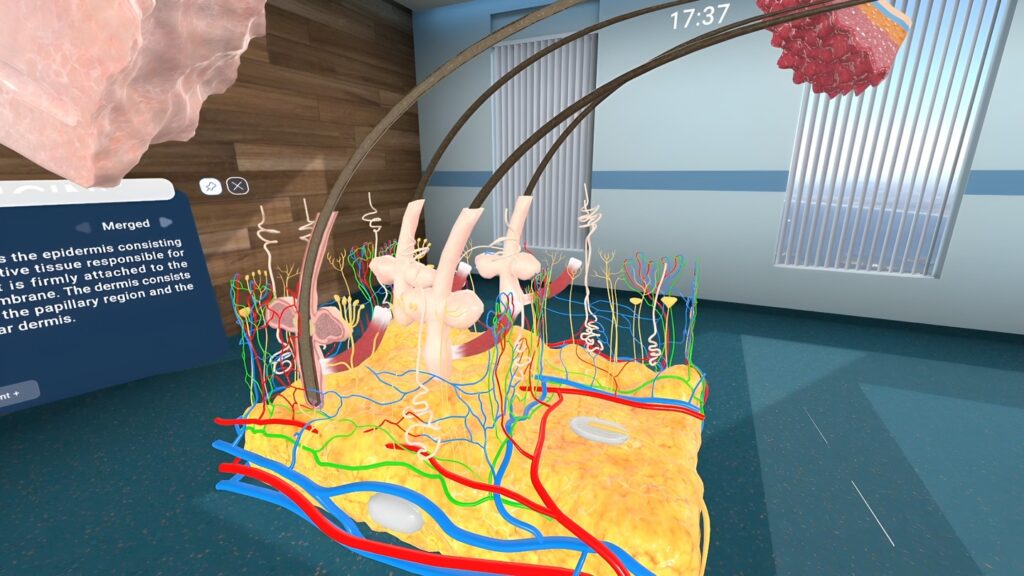

In the ever-evolving landscape of education, technology continues to redefine how we learn. One of the most groundbreaking advancements is the integration of virtual reality in education, particularly in the study of human anatomy. Human Anatomy VR stands at the forefront of this revolution, offering an immersive and interactive way to explore the human body like never before.
Understanding the intricate details of human anatomy is fundamental for students in fields ranging from medicine to biology. However, traditional methods of teaching anatomy present several challenges:
Two-Dimensional Limitations:
Organs and bodily systems are inherently three-dimensional, but textbooks and flat images can only provide a limited perspective. Learning about them on flat images is strange and inefficient, as it doesn’t capture the complexity of the structures.
Limited Access to Models: While some schools provide plastic models of organs, they are usually limited in number. Typically, there is only one model per class, and students have to take turns observing it. In such a scheme, the teacher interacts with the model while students passively watch, lacking the opportunity for each student to have an interactive, hands-on experience.
Field Trips to Anatomy Museums:

Some proactive teachers arrange visits to human anatomy museums. However, this approach has its drawbacks:
Practicality: It’s unlikely to be feasible to take a group of students to the museum for every biology class during the anatomy and physiology units.
Emotional Comfort: Not all students are mentally comfortable in such places, as viewing preserved human specimens (corpses) can be unsettling.
These limitations highlight the need for a more effective and engaging method of teaching anatomy.
Virtual reality (VR) addresses these challenges by providing an immersive, interactive experience that enhances understanding and retention. Human Anatomy VR is a prime example of how VR technology revolutionizes learning.


Human Anatomy VR offers a wealth of features that cater to various learning needs:
Human Anatomy VR is designed for accessibility and ease of use. It is compatible with leading VR devices, ensuring that schools and individuals with different VR headsets can seamlessly integrate it into their learning routines:
This compatibility ensures that educational institutions with different technological capabilities can adopt VR technology without significant additional investments.
Integrating VR in the classroom offers numerous benefits that enhance the educational experience:
By adopting Human Anatomy VR, educators can overcome the limitations of traditional anatomy teaching methods:
VR technology not only transforms anatomy education but also extends to other areas of biology and science. For example:
These applications demonstrate how VR can make abstract concepts tangible, enhancing comprehension across various scientific disciplines.
The integration of virtual reality education signifies a significant step forward in how we approach teaching and learning. By embracing VR technology, educators can:

The availability of advanced VR devices like Meta Quest and Pico VR headsets has made immersive learning more accessible:
The compatibility of Human Anatomy VR with these devices ensures that educational institutions can choose the best VR headset for their learning environment.
Human Anatomy VR represents a transformative approach to education. By overcoming the limitations of traditional teaching methods, it provides students with a comprehensive, interactive, and engaging way to study human anatomy.
As technology continues to evolve, integrating tools like Human Anatomy VR into educational settings is not just beneficial—it’s essential. It prepares students for a future where technology and education are increasingly intertwined, equipping them with the knowledge and skills they need to succeed.
Experience human anatomy like never before. Dive into the world of Human Anatomy VR and discover the future of interactive learning.
Frequently Asked
We prodive VR biology, VR physics, and VR chemistry simulations. Please, check our catalog.
Please, fill the form to get demo labs for free.
Please contact our customer support service at support@xreadylab.com or book a call with the team to find out the conditions and book the VR class set up at your school.
Subscription to XReady Lab interactive VR labs. If you are a school, then you are also given access to the VR classroom system. VR class system helps you easily launch VR lessons for a large number of students, follow the experience of each student, as well as customise the content without developers.
We adhere to the world’s generally accepted recommendations and research. Our products are suitable for children from 12 years old.